Leopard geckos are quite easy to keep given that their diet is easy to come by. There are many foods you can give to your leopard gecko including roaches, crickets and certain worm species such as waxworms and hornworms. Below, we discuss 15 of the best foods to feed your leopard geckos.
Most leopard geckos feed on crickets and various worm varieties such sias lkworms, wax worms, butterworms, tomato hornworms, superworms and meal worms. Knowing when to feed your pet leopard geckos and how much of each food is of great importance is explained below.
Best Foods to Feed Leopard Geckos
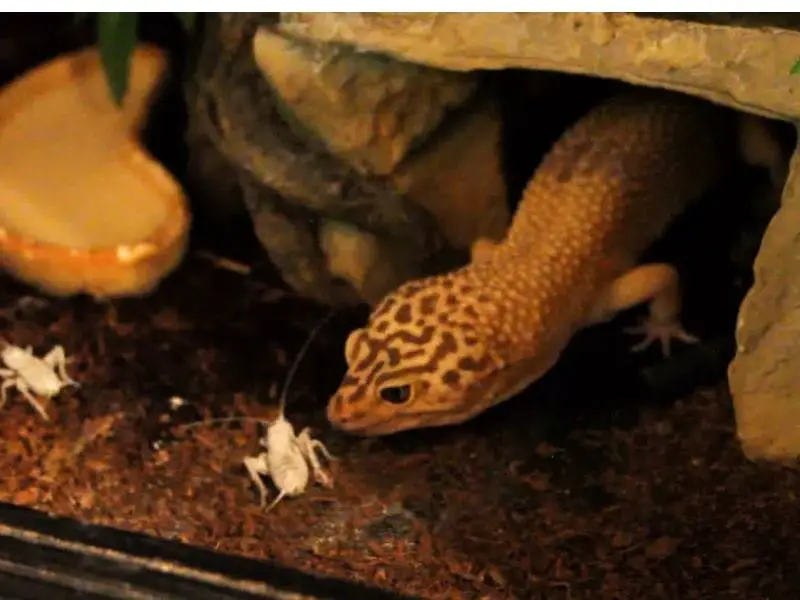
If you’re wondering what your leopard geckos can eat, the best foods include the following:
1. Crickets

You can feed your crickets to your gecko. There are many types of sources you can get them from, such as a pet store or even the wild. You can also feed them other insects that have been gut-loaded first with mealworms and peeled grapes for calcium supplements and vitamins.
Crickets make up the bulk of what leopard geckos eat in captivity because they’re easy to find (most people don’t want to keep crickets themselves). The only downside is that they may try to escape their enclosure if it’s not secure enough (but this isn’t too common an occurrence among well-fed crickets). They might end up killing some very expensive plants. As such, always exercise caution when keeping crickets in the home.
The right amount of crickets to feed your leopard geckos is about one cricket per week for adults and two to three crickets every other month for growing leopard geckos.
Crickets are a great option if your pet’s needs require it because of their high protein content. Just be sure to provide enough ventilation so your pets don’t end up breathing in too much carbon dioxide while eating them.
2. Wax worms

Wax worms are available from a few pet stores, but they’re not as common. They can be fed to geckos in small quantities (it’s always good to feed wax worms together with mealworms because of their higher fat content). Wax worms are also less likely than crickets to try and escape the enclosure. But again, it doesn’t happen too often anyway.
Wax worms have more protein and calories per worm than any other insect source for leopard gecko food, which is why some people prefer them over others.
A lot of enthusiasts believe that wax worms make up for the lack of variety by providing an overall better diet quality. The downside is that they’re a little difficult to find in most pet stores so you might end up having to find them online or order them from a specialty store.
3. Butterworms

Butterworms are another favorite food for leopard geckos. Butterworms are the larvae of a moth called “Galleria mellonella” or sometimes, the Indian Meal Moth (pantry moth).
Butterworm eggs hatch into tiny soft-bodied caterpillars that grow up to about two inches in length before they pupate and become adult moths.
Because butterworms have such low nutritional content, people usually feed them together with something else like mealworms because of their higher fat content. Wax worms are also less likely than crickets to try and escape the enclosure. This, however, doesn’t happen too often.
The amount of butterworms to feed leopard geckos is generally about ten butterworms per gecko, three times a week. This is because they lack the protein and calcium that other insects have.
Butterworms are usually available in packets at pet stores or online for purchase.
They come in different sizes so make sure you buy them small enough to feed your leopard geckos without any problem!
4. Tomato Hornworms

Tomato hornworms are also a good option for feeding leopard geckos.
They are easier to get from the garden, so it’s more practical than buying them at the store!
It is important not to use pesticides or other chemicals on tomatoes because they will be ingested by hornworms and could harm your pet.
In contrast with crickets, tomato hornworms have such low nutritional content that people usually feed them together with something else such as meal worms because of their higher fat content. Wax worms are also less likely than crickets to try and escape the enclosure. This doesn’t happen too frequently though.
The number of tomato hornworms you should feed your leopard geckos depends on the size of their meal. Young leopard geckos will need less, while adult leopard geckos will require more.
A good rule of thumb is to feed one hornworm per meal for juvenile and two hornworms per meal for adults.
Crickets are usually a better option because they have higher nutritional content, but this is not an issue if you supplement them with more effective foods like wax worms or mealworms.
5. Sow Bugs
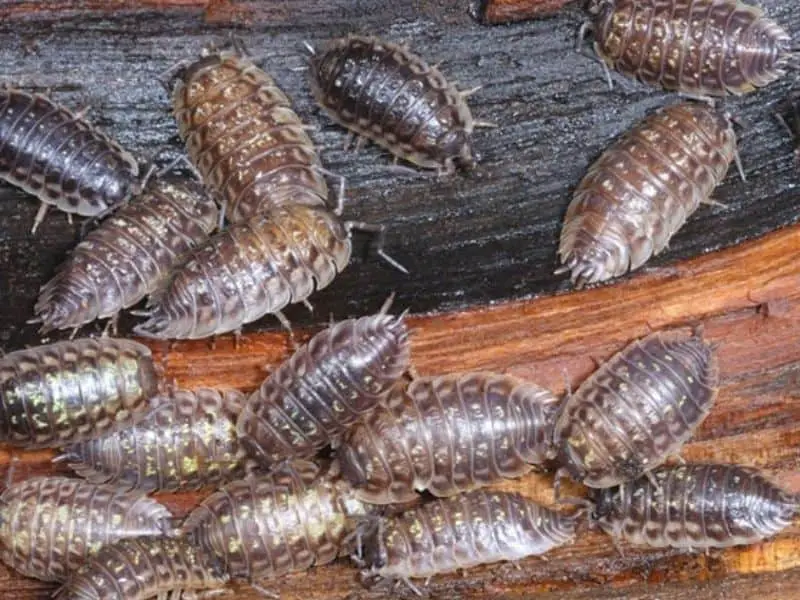
Another delicacy for your leopard geckos is sow bugs, which are small invertebrates liked by lizards.
The amount of sow bugs you should feed your leopard geckos varies depending on the size of their meal. Younger leopard geckos need less, while adult ones will require more.
A good rule is to give one sow bug per meal for juvenile and two sow bugs per meal for adults.
Adding some tomato hornworms or crickets can be a great way to provide extra nutrients if that’s what your pet needs!
It might not sound too appetizing at first, but these are actually pretty tasty little critters after being boiled in saltwater for about 30 minutes! (Note: boiling them in water without any added salts means they’ll taste worse when eaten.)
6. Cockroaches
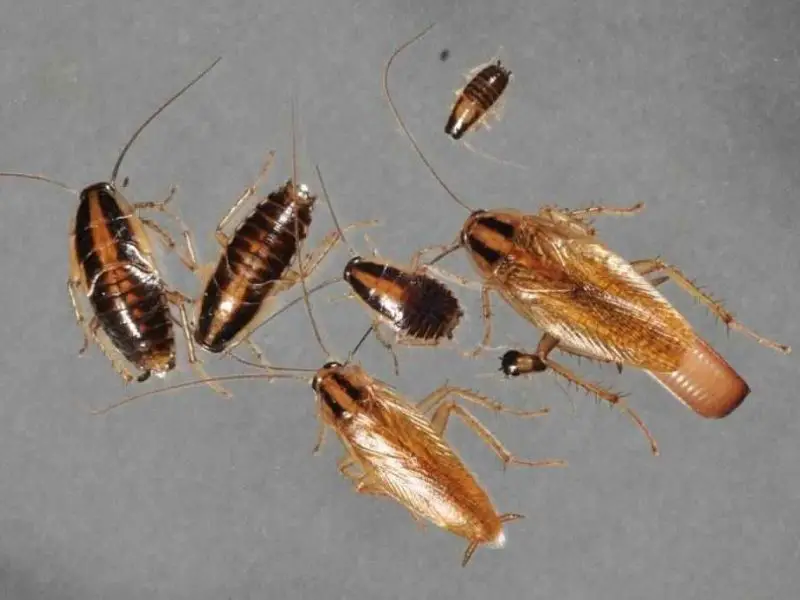
One easy food for your gecko to digest is cockroaches. The only downside? They’re not all that tasty, and they can leave an icky residue on the floor for you to clean up later.
You’ll want about one per meal for a juvenile leopard geckos or two per meal for adults.
7. Silkworms
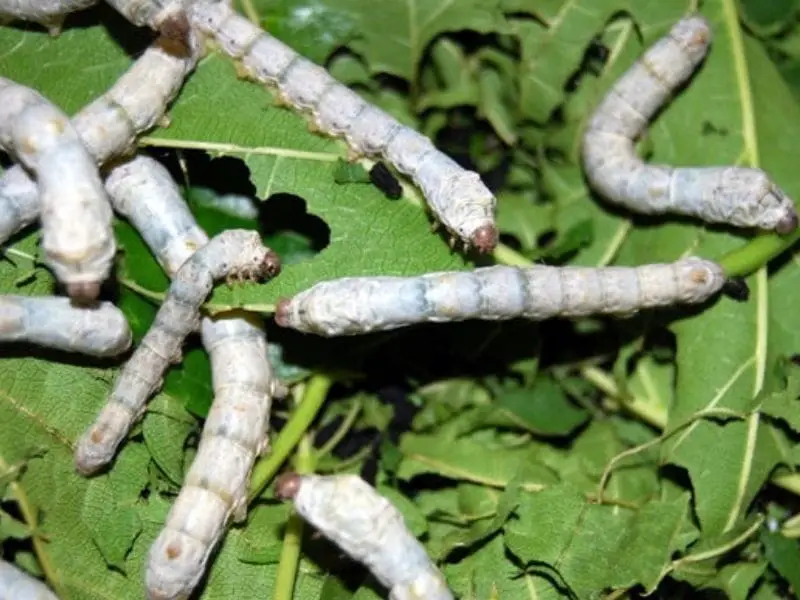
Silkworms are another great option as a food for leopard geckos. Silkworms are usually available in the form of pupae, so they can be supplemented to most diets without any trouble at all.
A single silkworm will supply about 16% of your pet’s daily protein requirements. It also contains calcium and other minerals needed by reptiles like phosphorus, sodium, potassium and magnesium. The main downside is that it might cause irritation or obstruction when eaten whole.
Feeding too many silkworms may lead to constipation because their rough surface passes through the animal’s body more slowly than softer foods like insects which require little chewing before being swallowed. This could make them more likely to stick inside the intestine instead of passing out with the fecal matter.
8. Meal Worms
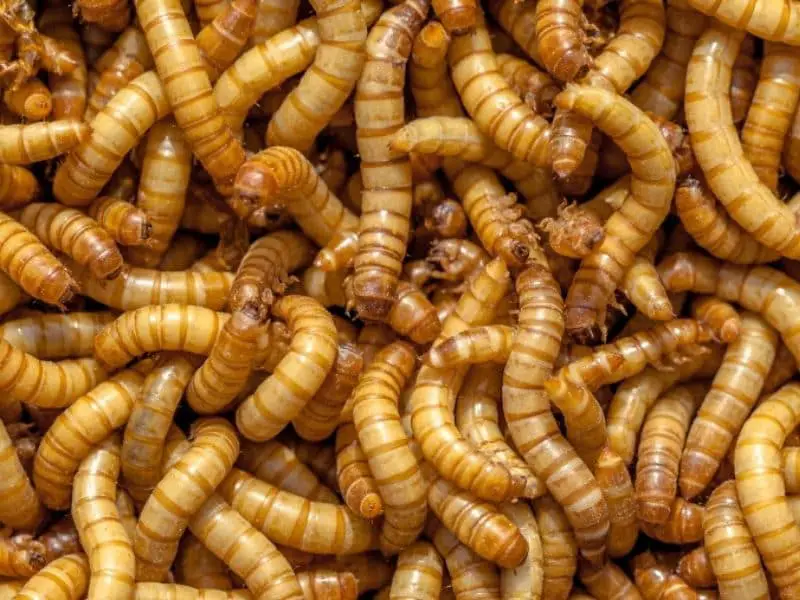
The next food for your leopard gecko is mealworms.
Mealworms are a great way to get your leopard gecko some nutrition, which they need. Mealworms can be fed in large quantities and make up for the deficiency of calcium and other important nutrients that will help keep your pet healthy.
There’s no telling how many mealworms you should feed to your lizard; it largely depends on its size and diet as well as whether there are any dietary deficiencies or not. You may have to experiment with feeding them different amounts before finding what works best for one specific animal.
READ MORE: Can Leopard Geckos Eat Dried Mealworms?
9. Beetles
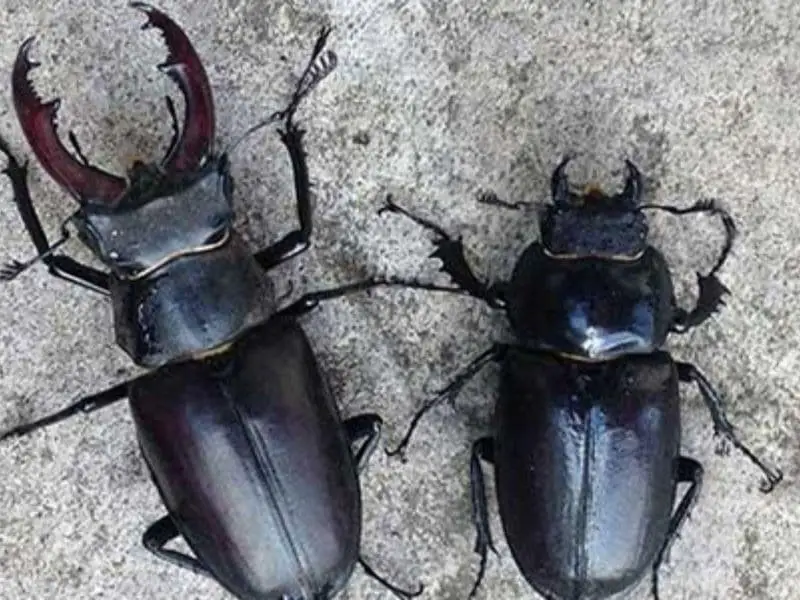
Beetles can also be fed to leopard geckos.
Beetles are a good source of protein and fat, but beetles should be fed sparingly as they can also cause an insect-related disease called myiasis in leopard geckos that is passed on from the beetle larvae if allowed to live too long inside the body cavity or intestine.
Feeding your leopard gecko beetles may not be advisable for this reason, however, small numbers of adult beetles (no more than five) can make an occasional meal for your pet without causing health problems.
10. Superworms

Superworms are great food for leopard geckos. They have a long lifespan, are easy to breed and contain higher protein levels than other feeder insects like crickets.
It’s hard to find the right number of superworms needed because it depends on their size and age but you should give them at least once per two days or so if they’re young while older ones can be fed once every week.
If your pet is not interested in eating these worms then place some vegetables (like broccoli) with raisins over it as food that they will eat instead.
11. Hawk Moths

Leopard geckos can also eat hawk moths.
One of the best things about feeding leopard geckos moth larvae is how easy it is to find them in your backyard, especially if you’re living in a rural area or somewhere with lots of trees and bushes.
Hawk moths are just one type of this kind of insect, but they can be fed as regular feeders because their nutritional value falls between that of mealworms and crickets. This makes them prime candidates for being part-time feeders for any pet lizard owner out there who has an interest in using insects on occasion (but doesn’t want to use too many).
The other really great thing when it comes to hawk moth larvae? They don’t eat plants! That means that hawk moths won’t damage your plants.
12. Domestic Moths
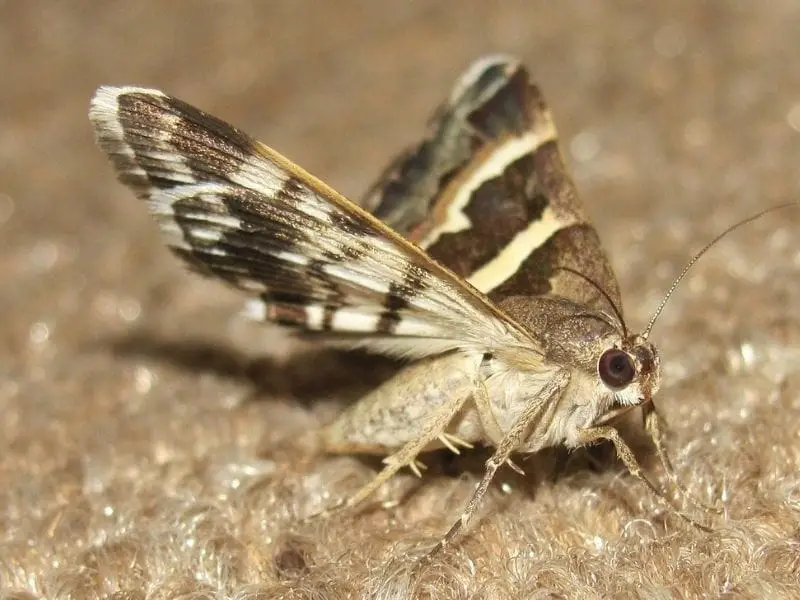
Your common domestic moth is a great food for your leopard gecko. It contains protein, fat and other nutrients to keep your pet healthy. One domestic moth should be enough for one meal, or you can feed it every two days if the leopard gecko is not full yet.
Domestic moths are high in protein and low in carbs so they make an excellent alternative to crickets which typically have higher carbohydrate content than most insects’ eggs or larvae.
13. Dubia Roaches
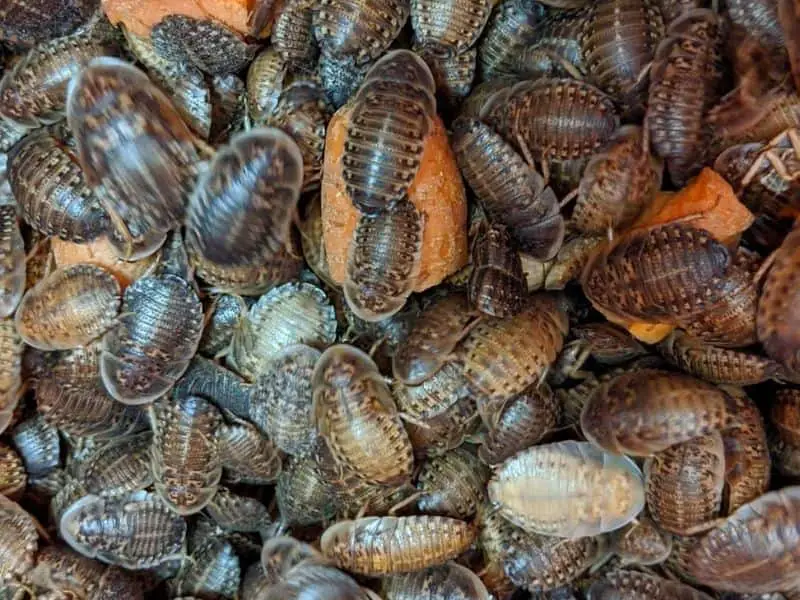
Dubia roaches make a great food for leopard geckos. They are a good source of protein, as well as fatty acids and minerals including calcium, phosphorous, magnesium, copper and zinc.
Dubia roaches also have less chitin than other insect feeders such as crickets which can help provide relief from the shell-related issues that sometimes come with feeding insects to reptiles like leopard geckos.
Some people find it easier to care for dubia roach colonies than cricket or mealworm colonies because they don’t require running water or moist substrate in order to thrive. They’re also generally much quieter than crickets too! You may want to try out dubia roaches if you’re looking for an easy-to-keep food for your leopard geckos.
14. Pinky Mice
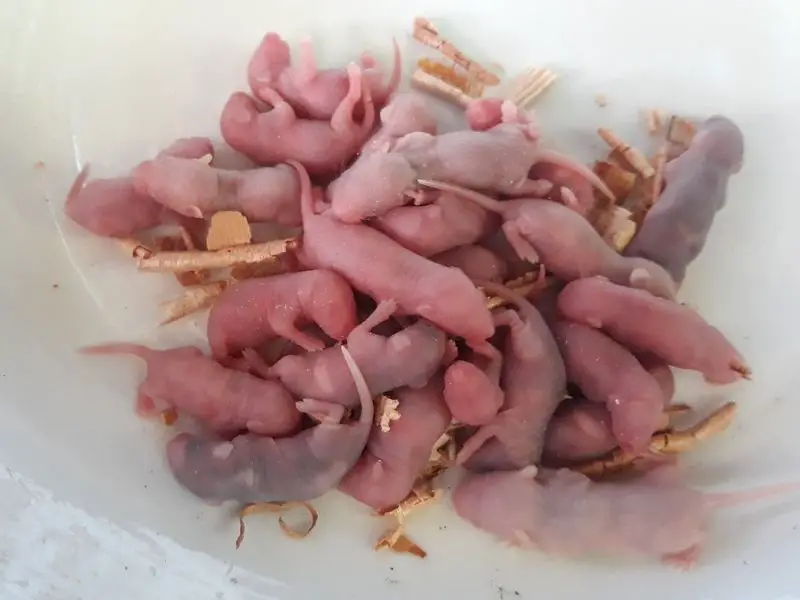
Your leopard gecko will require a high protein diet to maintain its health.
Pinky mice provide the easiest prey for small leopard geckos while being sufficient enough in protein and calcium content as well as easy to obtain from any pet store or bait shop.
If you do not have access to such type of food, it may be worth considering feeding them smaller insects like flies or fruitflies instead which are also rich sources of vitamin C and amino acids. Feeding too many pinkys will result in obesity so make sure your leopard gecko gets at most a pinky mouse every two weeks.
15. Phoenix Worms
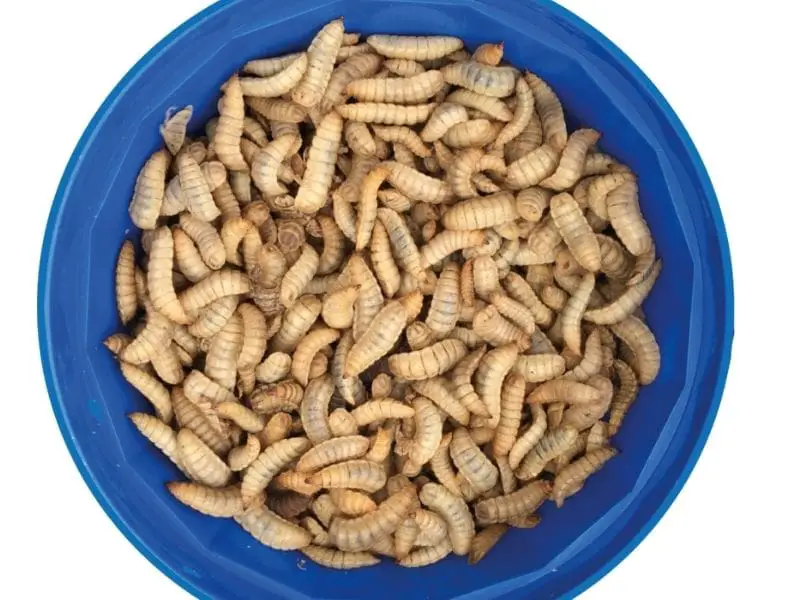
The last major food source for leopard geckos is phoenix worms. Phoenix worms are one of the most popular feeders to use because they can be ordered in bulk and stored without refrigeration until needed, making them a cost-effective food source. They are also easy to breed as long as you have an optimal environment with plenty of humidity (70%-90%), so it’s possible that your own breeding colony will allow you to continue feeding this particular diet indefinitely.
The downside? Because they’re worm larvae, these creatures have a lower calcium content than hard shelled insects or crickets – which means owners should pay close attention when using them as the primary food sources.
Crickets are the main food with the other being leopard gecko food alternatives. Always follow the recommended food amounts to provide the best diet for your pets.
How Often to Feed Leopard Geckos
The leopard gecko feeding schedule is as follows:
1. The Age of the Gecko
Leopard geckos younger than a year old should be fed every day, while those older than a year old can have food provided to them three times per week.
Leopard geckos do not need any water; they get all the moisture they need from their diet and environment. You only need to provide water for your leopard gecko if it will not drink on its own or is in danger of getting dehydrated due to other circumstances such as illness.
Leopard gecko age does not affect how often you feed them since there are no health benefits associated with this feeding schedule. It’s more important that you stick to feeding habits rather than worry about frequency too much, although younger animals may require more frequent feedings due to higher metabolisms.
2. The Health of the Gecko
The gecko’s health affects the frequency of feeding the gecko; if a leopard gecko is healthy, it will naturally eat more.
A sick or injured leopard gecko may not be able to move as much and therefore won’t need food as often. Leopard Geckos might stop eating food when they are ill in order to conserve their energy because they cannot hunt for themselves. However, if you notice that your gecko has lost its appetite then it could indicate illness and this should be addressed by a veterinarian immediately.
3. Time of the Day
As for the time of day, the best time to feed your leopard geckos is between 11 pm and 12 am.
This is because this hour of the day exhibits a change in both temperature and light levels, which will stimulate your gecko to eat more frequently than any other time period during a 24-hour span.
4. The Gecko’s Mood (Problem Eaters)
Another aspect to take into consideration is the gecko’s mood and how it will affect the frequency of feeding. Geckos that are in a good mood may be more inclined to eat, while those who are stressed out or angry might not want anything at all.
The results of one study on the subject show that there is only an effect on food intake when stressors occur within 15 minutes preceding exposure, which means we don’t have to worry about our leopard geckos being overly anxious for hours before meal time even if they’re in captivity with plenty to do.
It turns out that some people believe their animals can sense changes in day length due to shift work schedules; whether or not these people work night shifts themselves, they say their pets’ moods also change with the time of day.
What should you not feed leopard geckos?
Avoid feeding certain foods to your leopard geckos since they can have adverse effects on them. The following foods shouldn’t be fed to leopard geckos:
1. Fruits
Can leopard geckos eat fruit?
Don’t try feeding fruits to your leopard gecko. Fruits can be poisonous to your pet, and if they’re not then the food will just go bad much faster if left in the gecko’s cage.
2. Fish
Your leopard geckos can’t eat fish. Of course, it’s not an animal-safe diet for your pet gecko and there isn’t a single type of fish that the geckos can consume.
In addition, there’s no need to feed your pet gecko fish since it doesn’t contain the right type of nutrients and vitamins.
3. Fireflies
Fireflies aren’t good for your leopard gecko as they’re usually poisonous. One firefly is enough to kill your pet thus should be avoided.
4. Centipedes
Centipedes are poisonous bugs and shouldn’t be fed to any pets, including leopard geckos.
5. Pork, Beef, Chicken and all Processed Meats
These meats will only harm your little lizard pet and should be avoided.
6. Cat, Dog or Ferret Food
Food meant for other pets, and especially the non-lizard ones can harm the leopard lizard gecko. It should thus be avoided.
7. Spiders
Most spiders are poisonous and shouldn’t be fed to your leopard gecko.
Avoid these foods to help your gecko stay healthy at all times.
READ NEXT: How Long Can Leopard Geckos Go Without Food and Water?
